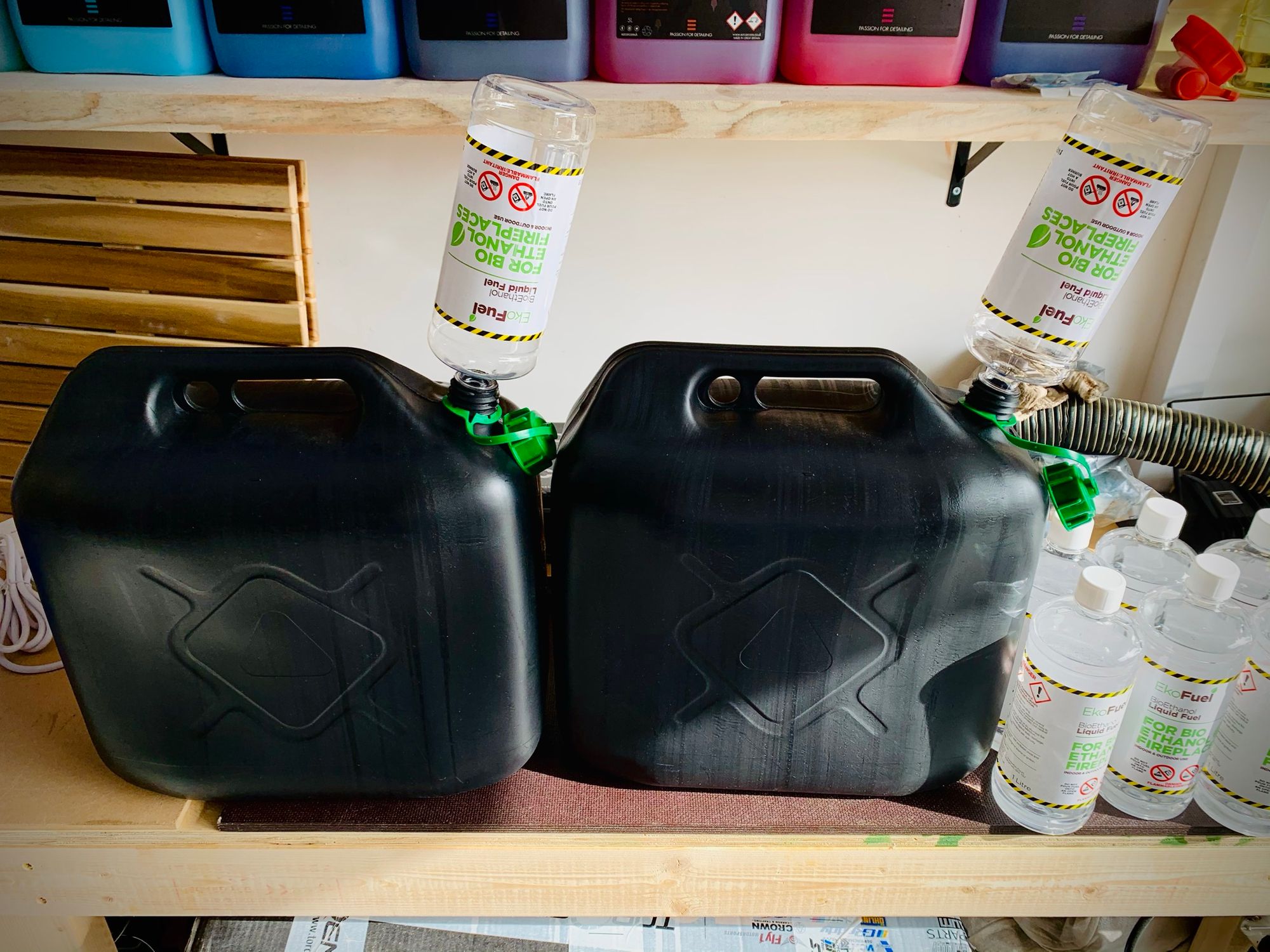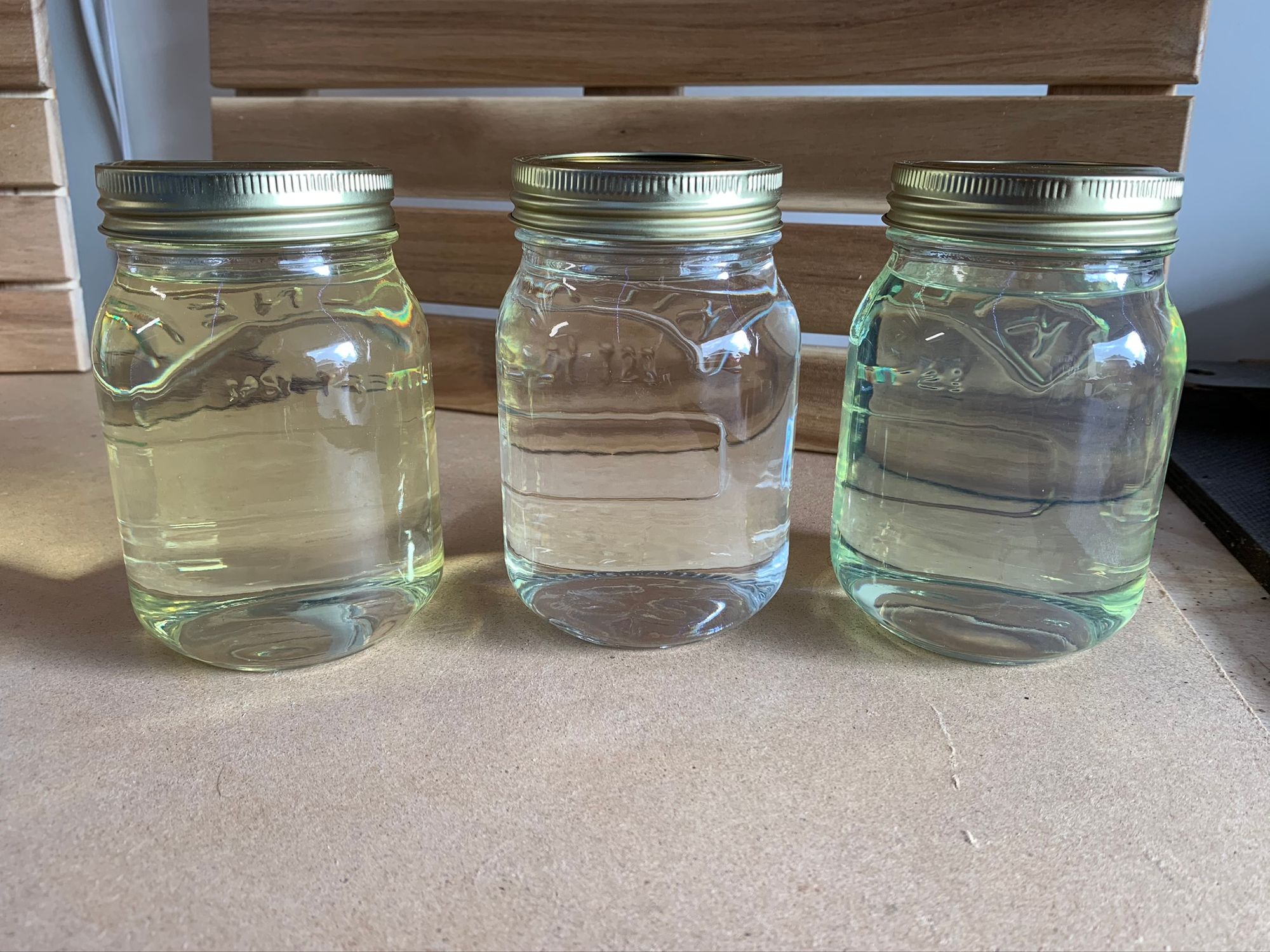Following on from the wild idea of injecting water and methanol into my engine in Part 11, Part 12 is going to have a considerable focus on more alcohol fuelled fun!
The Series
In this latest instalment we're again going to be focusing on extracting more power from the B58 engine at the heart of my M140i. Alcohol turns out to be a great fuel and whilst we added methanol back in Part 11, we're going to be focusing on ethanol here in Part 12.
Ethanol
To many people reading this, ethanol based fuel may not be a particularly new idea. We have many parts of the World where E85 (Ethanol 85% by volume) fuel is available at any standard petrol/gas station.

Ethanol is a renewable fuel and the drive to have vehicles use such fuel revolves around the environmental credentials of using them. To use E85 you need a Flex-Fuel vehicle which is a specially designed vehicle capable of handling this quite different fuel. If you were to put E85 in a standard petrol/gas powered car, you're going to get quite an expensive repair bill.
Here in the UK, and across Europe, all cars have been required to accept up to E10 fuel since 2010. Across most of Europe petrol/gas is E10 but here in the UK we only have E5 at present and possibly E10 as standard next year. The amount of ethanol in our fuel is increasing, slowly but surely!
Why push for more ethanol?
It's all about power. My desire to run my car on ethanol based fuel is not focused around the environmental aspects like most of the industry. Don't get me wrong, it's certainly a nice benefit, but for me, the desire to run on ethanol is about extracting more power from my engine. If I can do that whilst being a little bit more green than I was before, let's do it! It's not often that people driving a 500bhp+ car can say that 1/3 of their fuel is renewable.
Many car enthusiasts will know that higher octane fuels allow you to make more power. At the petrol/gas station you may see ratings on different fuels like 85/90/93 or even 99 if you're lucky and these are the octane ratings. Ethanol has an octane rating of 113 which is significantly higher. The rating is so much higher that even if you only run on a blend of standard petrol/gas with ethanol, the ethanol can still raise the overall octane rating of the fuel by a few points. So what does higher octane give us?
Ignition Timing!
I really don't want to delve down the rabbit hole of ignition timing but I want to explain enough about it that we all understand why more timing is better. Ignition timing is measured in degrees (°) and timing advance refers to how many degrees of rotation before reaching Top Dead Centre (TDC) on the compression stroke that the spark plug will be fired in a given cylinder. The more timing advance you have the sooner you are firing the spark before the cylinder reaches the top of its compression stroke and the more useful work you can extract from the same quantity of fuel and air during the downward travel on the following combustion stroke. You always want as much timing advance as you possibly can, but there are factors that will get in the way and stop you having more. I talked about knock (detonation) a little in Part 11 which is when an air/fuel mixture combusts before you want it to. If you fire the spark early (timing advance) the fuel is combusting and expanding whilst also still being compressed by the upward travel of the piston on the compression stroke. This can cause further ignition triggers due to the pressure/heat and all of a sudden the combustion process is fighting the compression stroke and good things do not happen. On a good day, you may crack a piston or 'bend a rod' (when the connecting rod between the crank and the piston bends) and on an really bad day your engine will just turn itself inside out and deposit internal components on the ground...

Knock resistance
The higher the octane rating of a fuel, the more resistant it is to knock. Because the octane rating of ethanol is so high, running even a blend of ethanol and petrol/gas is enough to make a significant difference. With a higher octane fuel you can run more advance on your ignition timing and often extract quite significant amounts of additional power without changing anything else. This is the property of ethanol that we want and it's especially helpful in forced induction engines like my turbocharged B58 because forced induction creates higher pressures and temperatures which limit the amount of advanced timing you can get away with. Now that we know why we want it, let's get on to how we get it!
Blending ethanol fuel
As I mentioned above there are many places around the world where you can already buy E85 fuel right out of the pump. The problem is that unless you have a Flex-Fuel vehicle, you probably can't get away with using it. The limitation for most cars is that the fuel system can't flow a higher volume and when you're using ethanol fuel, you need (by volume) than petrol/gas. Because the B58 engine and fuel system is designed to take at least E10 (under European law) many people have found that it actually has quite a significant tolerance and will run E30 quite comfortably without any issues at all. To make your E30 blend there are 2 choices you have. The ideal choice is to get E85 from the pump and dilute it down to E30 using regular petrol/gas from the adjacent pump. If, like me, you don't have E85, then you have to blend your own!
In that video I'm taking Bioethanol that I buy in bulk from eBay and blending it to E30 using regular petrol/gas. This gives me precisely what I need but there is something to factor in. I've already mentioned some places having E85, Europe having E10 and here in the UK we have E5, but those numbers are a maximum %, not an actual %. Once you tune for ethanol you need to be aware that E85 fuel can actually go as low as E60, it's "maximum 85% ethanol" and not "definitely 85% ethanol". Small variations in ethanol concentration will not matter but once you get beyond a 5 percentage point deviation you could start hitting some issues.
You can buy more official methods of testing ethanol content but I decided to roll my own and test with the setup you see above. I've found that my local fuel here generally moves between 2% and 3% ethanol on E5, which isn't enough for me to factor in to my blending calculations just yet. If you're using E85 and it varies from E60 to E85, you definitely need to test and factor that variation in. For now, I have a simple formula of 6L of 100% ethanol and 14L of petrol into a 20L Jerry Can for mixing and then straight into my fuel tank to give me E30.

On an interesting side not, ethanol does look very different to petrol/gas and it smells almost sweet by comparison. Here's a picture with standard petrol/gas on the left, pure ethanol in the middle and my E30 blend on the right.

Tuning for ethanol
Unfortunately, (unless you have a Flex-Fuel vehicle) you can't just dump some extra ethanol in the tank and expect great things to happen, at least not outside of the capabilities of your vehicle, you need to tune your car to be able to leverage its new fuel. If you're in the UK and we have E5 fuel here but your car can accept E10, you can blend up to E10 without any problems at all. It's when you go outside of the expectations of your vehicle that things will need to be changed.
My tuning platform, BootMod3, has a selection of Off The Shelf (OTS) maps that are targeted at an E30 blend and with just a few seconds of programming, my ECU now knows that we're running a different fuel and that it should work to extract the potential of that new fuel.

We're quite fortunate on the B58 platform that the fuel system is capable of meeting the increased volume demands of running E30 without any modification. Modifying the fuel system of a car can be expensive and time consuming, but there are conversion kits out there for those that are interested. For now, I will be sticking with the E30 blend and the advantages that brings like a lot more advanced timing!
Timing. The point of E30 is to run more advanced timing for more power so it's good to see all 6 cylinders running in unison when under load. I'm running up to 20° of timing advance at WOT! Check for timing being pulled or erratic cylinders. pic.twitter.com/9IR8tvUDMB
— Scott Helme (@Scott_Helme) June 26, 2020
For the car nerds out there, that's 20° of timing advance at wide open throttle running 20PSI of boost! It's hitting boost targets, the fuel trims are negative (methanol port injection), exhaust temps are under control, there's zero knock detected and the wastegate duty cycle indicates the turbo has a little more left in it (check the Twitter thread). In short, it seems like the car has a lot more potential and I plan on finding out 😎
Parts
Here's the list of parts used in Part 12 and where you can get them:
View all of the other blog posts here: The BMW M140i Project Series
